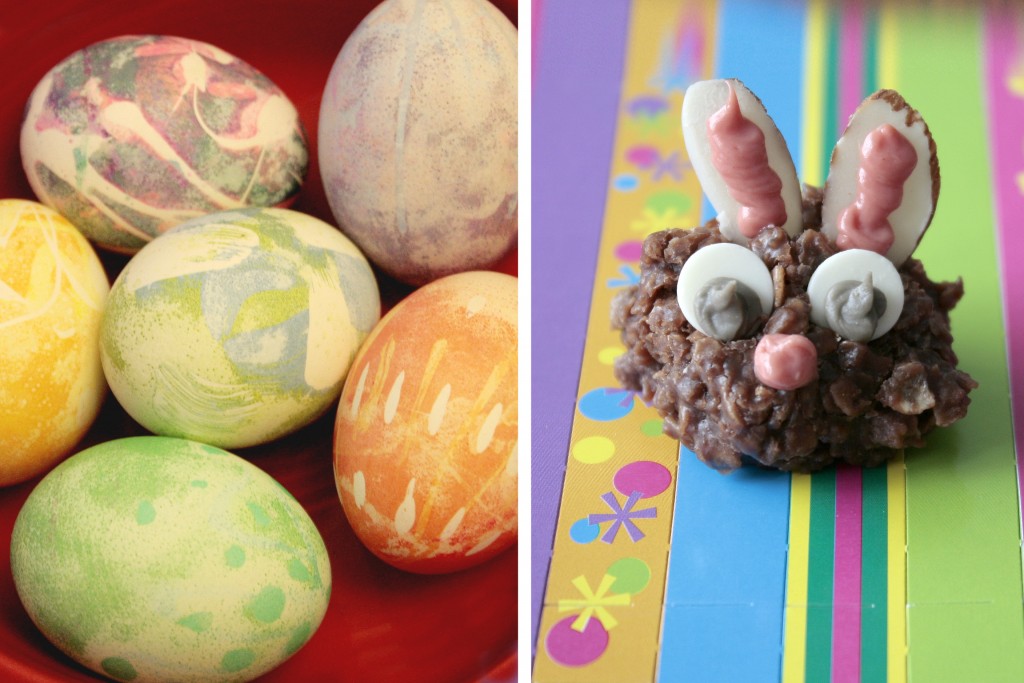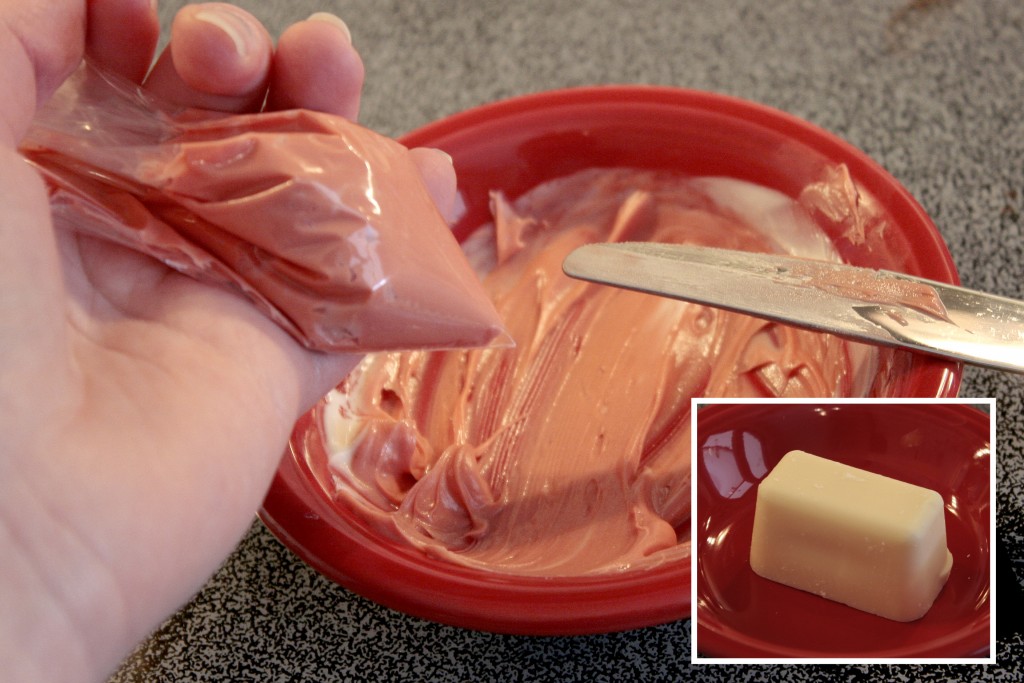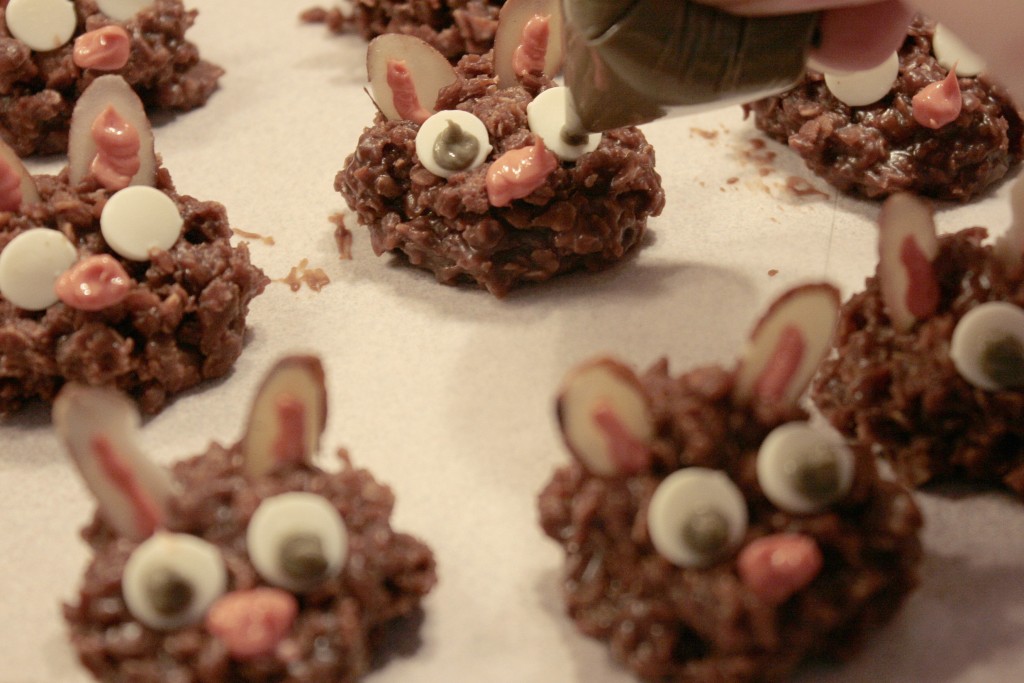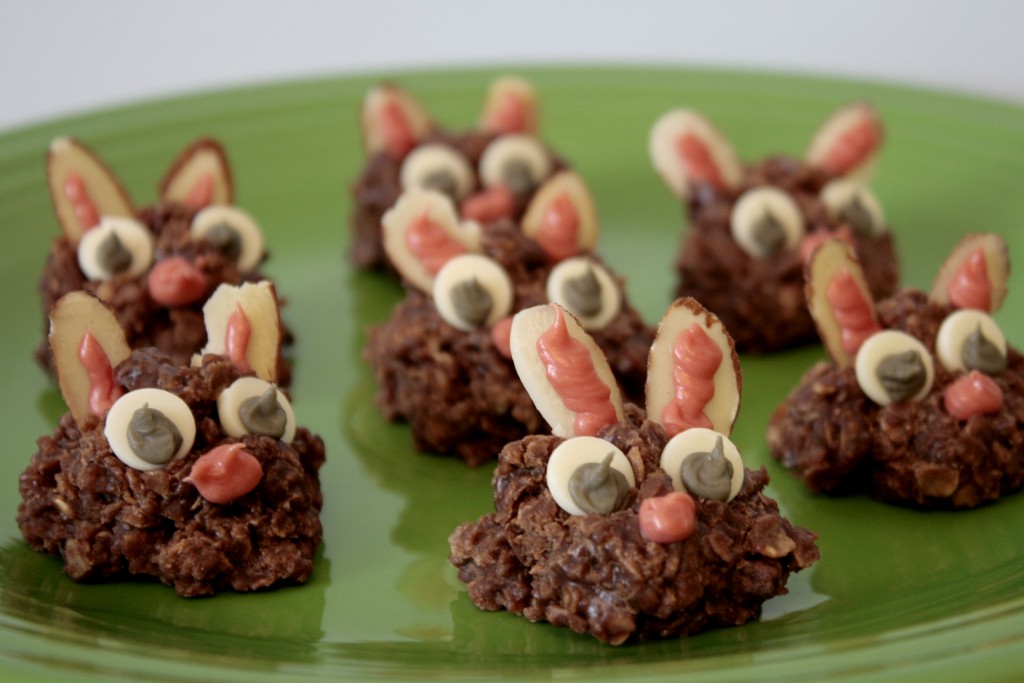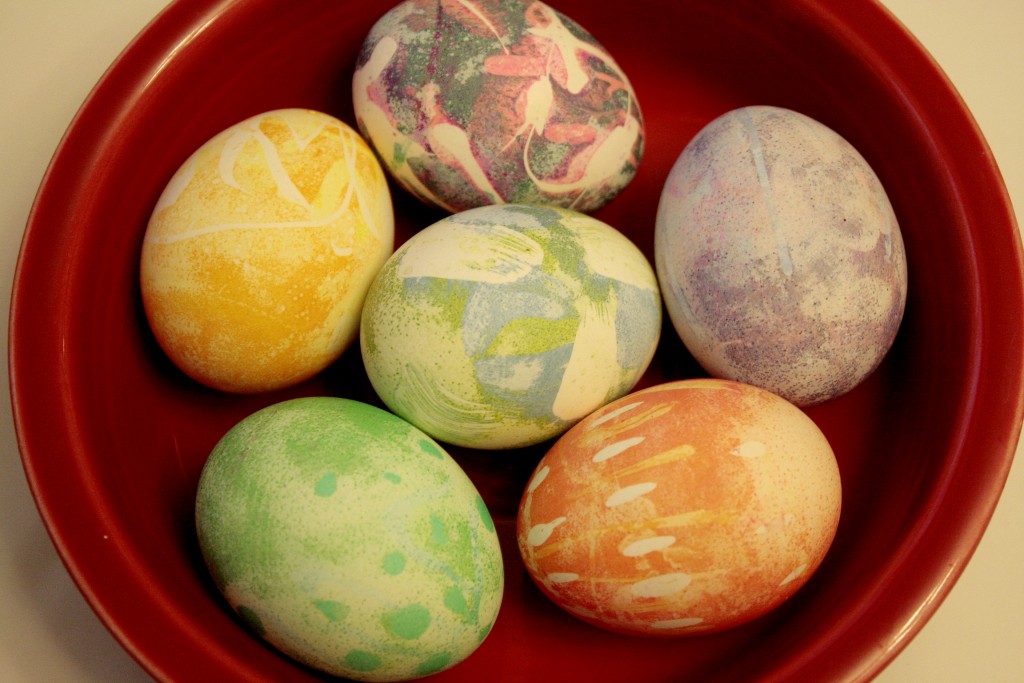The Bunnies
These no-bake bunnies are much easier to make than cut-outs but still give you that cute Easter bunny look! If you're wanting to make these easier for kids to decorate, scroll to the bottom for some alternate decorating tips.I used my standard no-bake cookie recipe for these with just a little extra oats. In a saucepan combine: 1 cup white sugar, 2 Tbsp. unsweetened cocoa powder, 1/4 cup butter, 1/4 cup milk and 1/4 tsp. salt. Bring to a rolling boil (when it's boiling hard enough that when you stir it keeps boiling). When the rolling boil starts, start up your timer for one minute. When the minute is up, remove from heat and quickly stir in 1 3/4 cup quick cooking oats, 1/4 cup peanut butter and 1/2 tsp. vanilla extract. Use a spoon to quickly drop by teaspoonfulls onto wax paper.
You can double the recipe but it's hard to get them all done before they dry unless you've got some helpers! As soon as the cookies are on the wax paper, press two white chocolate chips into them for eyes with the flat side facing out. Press two slivered almonds into the tops for the ears. If they look like blank-eyed zombies then you're doing a great job.
Next, melt one block of almond bark white chocolate coating (that's the block in the lower right of the photo below) and mix in two drops of red food coloring. (You can also melt some of your white chocolate chips but I've never had good luck with them in the microwave, only on the stovetop on low heat.) Then spoon it into a ziploc bag. Twist the top so the chocolate is all firmly in the bottom corner. Then snip 1/8" off the corner. In the photo below I haven't twisted the bag yet. Make sure to twist it around several times so the chocolate doesn't go squishing everyone when you squeeze on the bag.
Start piping on the pink for the noses and ears.
Next, squeeze out the remaining pink chocolate back into the bowl and add food coloring to make it dark brown. I added 2 drops blue and 1 drop green but you may need more or less depending on your food colorings and chocolate. Spoon it into the unused corner of your ziploc bag, snip that corner and pipe on the eyes.
And now you have a cute little field of bunnies (ready to be eaten!).
Alternate decorating tips: Piping the melted chocolate will be too difficult for younger and some older kids. You can use jelly beans for the features by using black for the eyes and red or pink for the nose. Leave the ears just the plain almonds or cut a pink or red jellybean in half lengthwise and put it in front of the almond. Another option is to look for confetti sprinkles or something similar in the cake decorating aisle in your grocery store. After a few minutes, the white chocolate chips will melt and you can press the blue or purple sprinkles into the chips to make the eyes and add the pink ones for the noses. You can also use mini chocolate chips for the dark part of the eyes.
The Eggs
I've always enjoyed the tradition of dying eggs. Now that I'm doing it with my own son it's fun to think about combining different colors and learning how they all work together so you can make this project a bit educational too!Start out by hard boiling the eggs. I prepared my dyes using a standard Paas egg dying kit and following the instructions to add together 1 tablet, 3 Tbsp. vinegar and 1/2 cup water. You can also make your own egg dye from food coloring using 1 tsp. vinegar, 20 drops coloring and 1/2 cup boiling water. You can find more information on the McCormick website.
Next, gently dry the eggs with a paper towel and rub off the rubber cement. The dyes weren't completely dry yet when I did it so they rubbed off a little with the rubber cement but I like the effect it gave the eggs. I don't recommend eating these eggs. The rubber cement is not non-toxic and the shell of an egg is porous so it's possible you could be ingesting some of it if you eat the egg. But they make a great decoration! Rather than hardboiling, you can also poke a hole about 1/8" in the top and bottom of the raw egg and blow the insides out then rinse. They're more fragile that way but you can also leave them out of the fridge for an unlimited amount of time!

